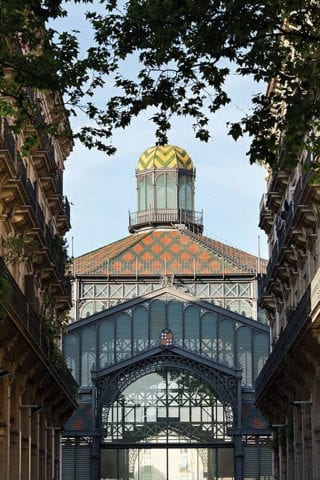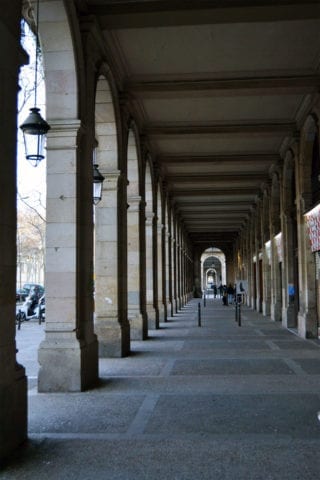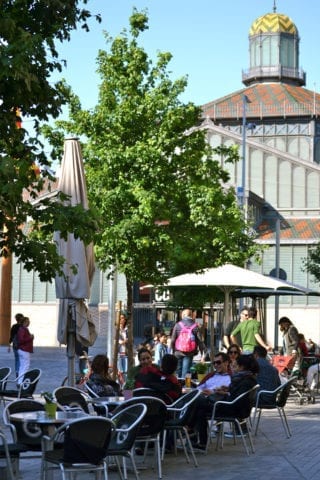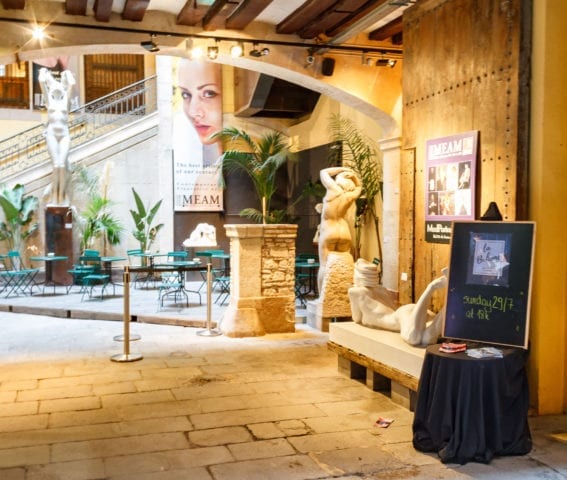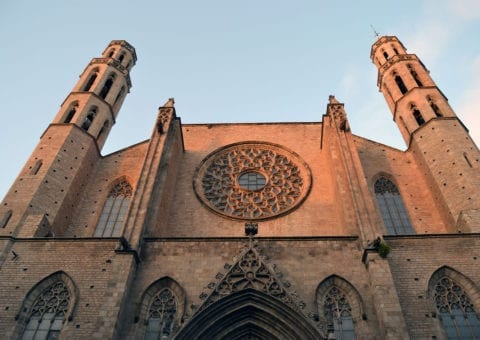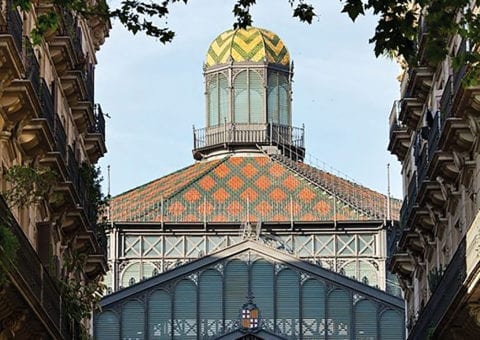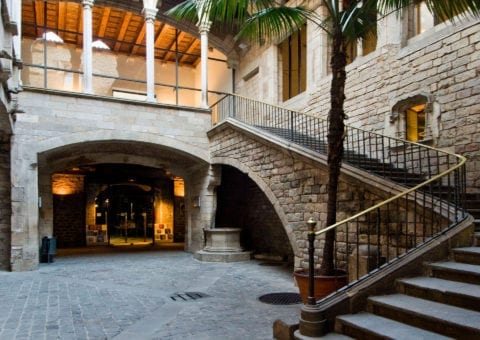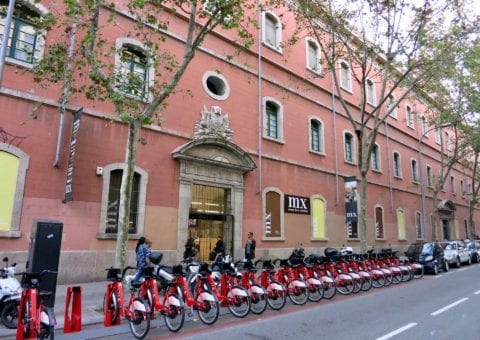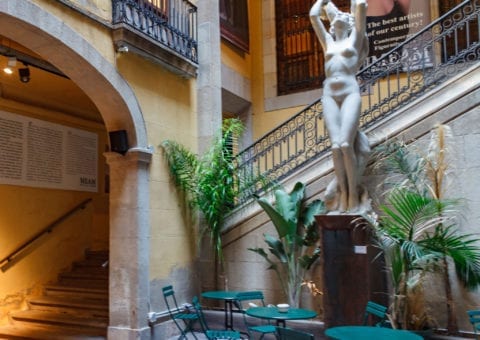The Born District of Barcelona
El Born, a cosmopolitan and open district of Barcelona, offers all the ingredients to visit it; architecture, culture, gastronomy and leisure. There are many points of tourist interest: The Basilica of Santa Maria del Mar, the old Born market, the Picasso museum, etc. The design of its shops, restaurants and cocktail bars deserve a separate tour.
The “Born” word refers to the space where medieval tournaments and games of arms are held, the space it occupied was from Santa María del Mar to Calle del Rec, now Paseo del Born.
The first traces found in El Born are from the 3rd century AD in Roman times, later in the 8th century the Muslims settled.
Barcelona lacked a port and the Borne was an open door to the sea, hence the maritime tradition of the neighborhood, in the 10th century around the church of Santa María de las Arenas (Basílica de Sta. María del Mar) there was already a nucleus of inhabitants mainly with trades related to the sea, such as the Bastaixos or the Massips de la Ribera, in charge of transporting merchandise to the city from ships. But its splendor began in the 13th century, when people began to populate outside the walls and it was called La Vilanova (The New Town). Artisans, port workers and unions concentrated in this neighborhood, proof of this are the names of its streets that refer to their trade. The nobles and merchants also built their residences, the maximum expression can be seen in Montcada street contemplating its beautiful palaces, the Picasso Museum occupies several of them, formerly this street was called “Camino that leads to the Born”.
The War of Spanish Succession in which Catalonia continued the war against Felipe V and France ended in 1714 with the capitulation of the city, which meant a total transformation of the neighborhood, large areas of buildings were demolished to build the Citadel, which would house the army of the king to control the city militarily, many of the inhabitants who lost their homes moved to Barceloneta and Somorrostro beach.
The Born Market in Barcelona
Designed by Josep Fontserè, it was the first great building of the so-called iron architecture. It was opened in 1876 to house the Barrio de la Ribera market and in 1921 it became the city’s central fruit and vegetable market until 1971, when it was moved to the Free Zone and Mercabarna was opened, where the large markets will be brought together. city centers; vegetables and fruits, meat and fish. After the transfer, a great debate begins about its uses, from demolishing the building to make a bus station to recovering it for cultural events. After a small restoration, it will be used for exhibitions and then a lethargy without activities, until it is agreed that the building will house the Provincial Library of Barcelona. During the works, well-preserved archaeological remains of what life was like in the medieval city at the end of the 17th century were found. In 2006 the Generalitat de Catalunya declared it to be of National Interest and the building became the destination of El Born Center de Culture i Memoria, an 8000 m2 space to reflect on the historical memory of a town and in which you can observe the remains of what was the city with its streets, squares and its evolution until the War of Succession in 1714 with the destruction of the neighborhood.
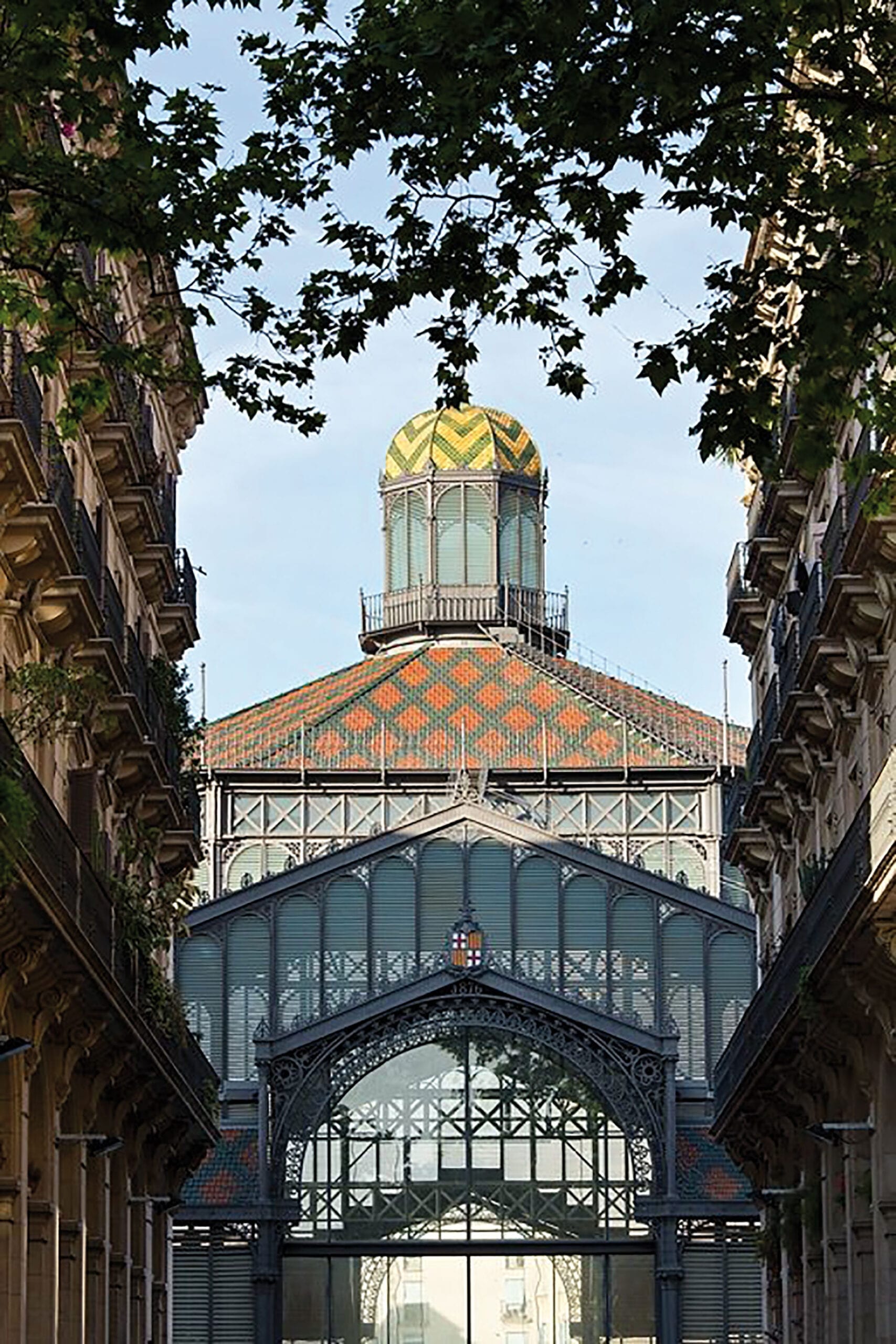

With your permission
Chance or destiny caused me to be born in the heart of Borne, and in 1957 my parents opened the Pitin bar on Paseo del Borne. I remember my childhood when at three in the morning my father would raise the bar’s shutter, little by little the neighborhood became active and the trucks with their merchandise began to arrive, “the Camalics” with their carts full of boxes of fruit and vegetables. that rose up into the sky, and I wondered how they didn’t fall on top of them. Then came the small buyers, owners of food establishments (Colmados), the best buyers were those of the groups; schools, military barracks etc. and finally he looks for lives.
Curiosities of the Born of Barcelona
Santa Maria del Mar
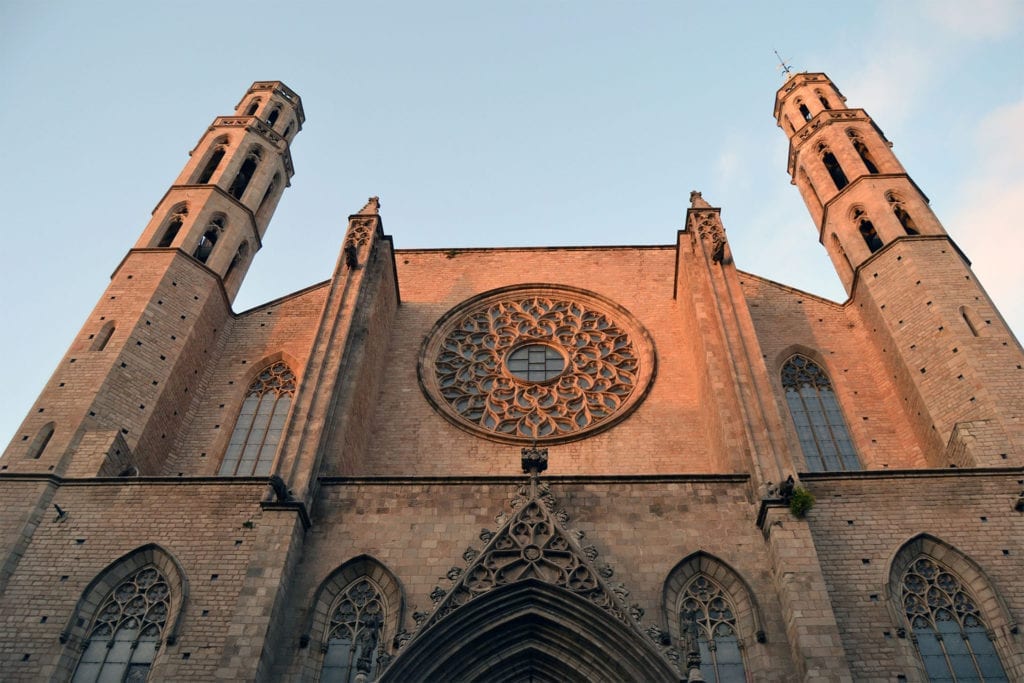
The bastaixos, who were the workers who unloaded the goods from the port, altruistically were in charge of transporting the stones for the construction of Santa María del Mar from the Montjuïc quarry. A tribute to them can be seen at the entrance doors where they appear with a stone behind them.
Look for the Barça shield between the windows.
When the restoration and replacement of the stained glass windows of the church was carried out, its financing was carried out by different entities in the city and one of the windows bears the Barça shield, attesting that it was financed by Fútbol Club Barcelona.
Quick route through El Born in Barcelona
Our tour begins on Vía Layetana street next to the Jaume I metro stop. We will go down Argentería street until we reach the Basilica of Santa Maria del Mar (1329), a jewel of Catalan Gothic and a must-see. Next to the basilica, just where Paseo del Borne begins, we will find the splendid Montcada street, the backbone of the neighborhood’s Renaissance past, where many palaces have been preserved, several of them converted into museums, such as the Berenguer d’Aguilar palace, seat of the Picasso museum. Right next to the Picasso museum is Princesa street, we recommend strolling through Calle Flassaders, Cirera and Mosques until you reach Paseo del Borne, where the old Mercado del Borne is located and sit on one of its terraces.
Streets and trades
I have told you that most of the names of its streets refer to their trades or guilds and here is a small sample.
Agullers: Manufacture of fishing needles and tools. Canvis Vells: Merchants dedicated to currency exchange were installed here. Caputxes: workshops that made hoods. Esparteria: Workshops that work and make pieces of esparto. Espaseria: Workshops that made swords. Flassaders: Artisans who were dedicated to making blankets. In this same street at number 2, is the Seca or coin factory, the first documents date back to 1441, we can see its royal coat of arms on the façade, here the first peseta of modern times was minted. Formatgeria: This street is where cheese makers from outside Barcelona used to go to sell their cheeses. Plaça de les Olles: Sale of pots and household utensils. Sombrerers: Workshops for making hats, caps and barretinas. Vidrieria: Workshops where glass was made and worked.
